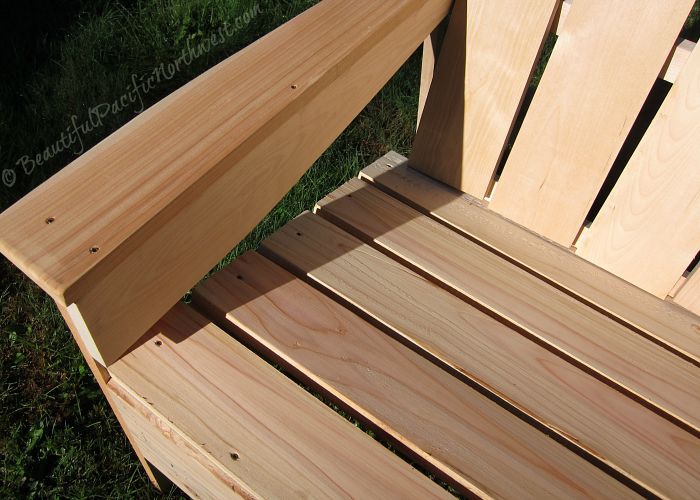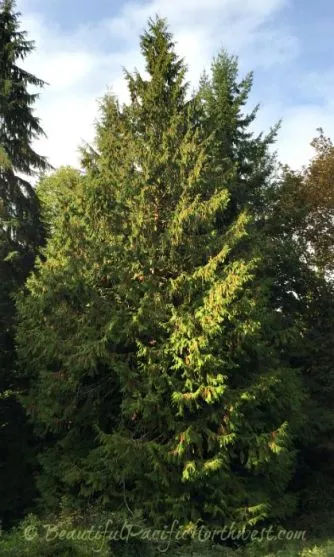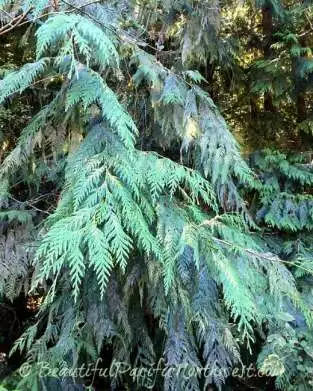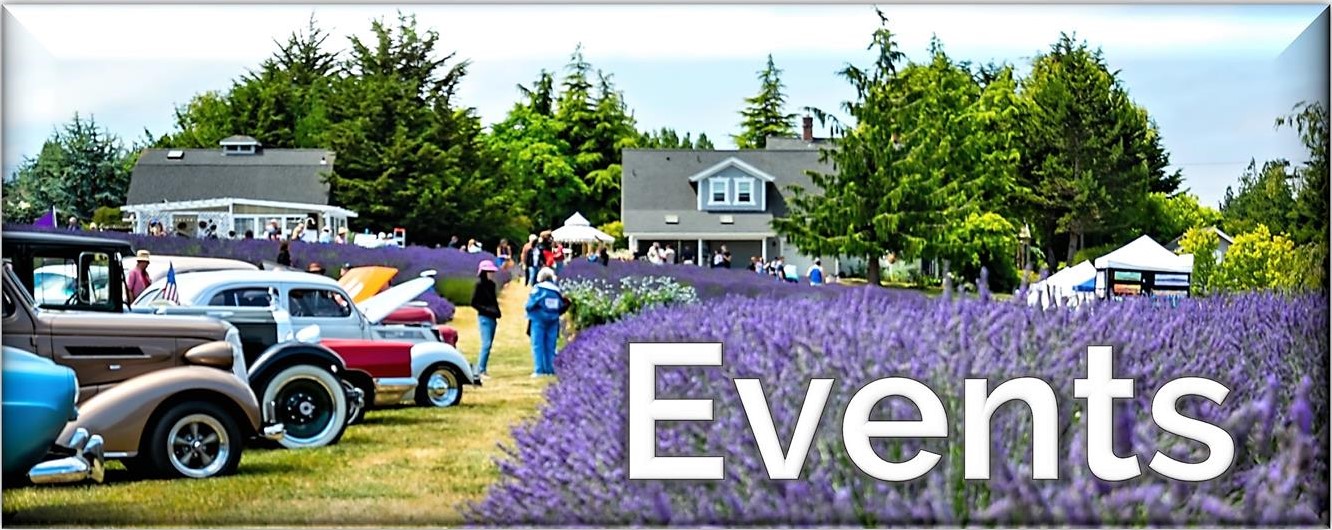Western Red Cedar Tree
Western Red Cedar Tree. Recognize the Western Red Cedar in the Pacific Northwest with photos and descriptions, plus uses for cedar wood.
This is a tree that is not only beautiful but important to our ecosystem here in the Pacific Northwest and Olympic Peninsula. Thuja plicata grows along the coastal areas of the Pacific Northwest and even as far inland as the Continental Divide. It can be found on drier mountainsides and also along stream and river beds and wetlands and it grows to its most beautiful and greatest size in the Olympic National Park, where it receives lots of moisture.
Not a true cedar, it resides more in the family of the arborvitae, a Native American name meaning "tree of life." It comes in a variety of sizes, colors and shapes making it an excellent landscape tree.
Identifying the Western Red Cedar Tree
Among all the trees in the forest, cedar trees appear the greenest. Other tree needles darken with age and produce bright green new growth only in spring, but the soft green, scaly, frond shaped foliage of the Western red cedar remains green all year long.
Cedar foliage drapes from curving branches densely enough to keep the ground below dry. They are decorated with small yellow-green to brown cones resting on top. When mature, the cones release small winged seeds. Reddish-colored pollen cones produce the yellow dust you might see covering your car in the spring, which can be very allergenic for some people.
Western red cedars can successfully grow and reproduce in deep shade or sun and have the potential to grow into enormous specimens. Some of the more notable ones in the Pacific Northwest are:
- The the king of them all grew in Cathedral Grove on Vancouver Island, British Columbia. It was 233 feet (71 m) tall and over 700 years old. Sadly, it was destroyed by vandals who set it on fire. When it finally fell, it dug it's own "Giant's Grave," by the shear force of the impact.
- Current Largest: The Quinault Lake Red Cedar at 174 feet (53 m) tall, 19.5 feet (6 m) around and containing 17,650 cubic feet (500 cu. m) of wood.
- 2nd largest: The Cheewhat Lake Cedar in Pacific Rim National Park Reserve on Vancouver Island with 15,870 cubic feet (449.4 cu. m) of wood.
- Tallest: The Willaby Creek Tree south of Lake Quinault at 195 feet (59.4 m) tall.
- The Kalaloch Cedar in the Olympic National Park is - or was - the 5th largest tree until it was destroyed by a storm in March 2014.
The Western Red Cedar provides winter food for browsing elk and deer and nesting habitat for spotted owls and other birds.
Salmonberry, red huckleberry, Oregon grape, Pacific trillium, Oregon oxalis, evergreen violet, licorice fern, lungwort, and many varieties of ferns are just a small list of understory flora cohabiting with Western Red Cedar trees in coastal areas.
In inland areas, cedar trees are accompanied by everlasting cordydalis, panicle bluebells, mountain alder, cascade azalea, and Rocky Mountain honeysuckle, among others.
Uses for Western Red Cedar Trees
The mature Western Red Cedar produces a natural chemical called thujaplicin, which acts as a fungicide to discourage wood rot. This is what makes western red cedar tree such an excellent building material.
Aromatic cedar oil produces a distinct aroma which discourages insects from destroying the wood, making it the wood of choice for your grandmother's cedar chest. Cedar wood is also sold in simple blocks which can be placed in drawers and closets for the same reason - to repel insects.
Cedar is strong but lightweight, excellent for building boats. Its warm acoustical tones make it a good wood of choice for guitars.
 Seat and arms of this unfinished Adirondack chair are made from privately milled western red cedar wood.
Seat and arms of this unfinished Adirondack chair are made from privately milled western red cedar wood.Cedar has many other uses:
- Shingles and shakes are the main special use of western red cedar
- Utility poles, fenceposts
- Paper pulp
- Perfumes
- Insecticides
- Cedar leaf oil goes into vet soap, shoe polish, deodorants
- Bee hives
- Fishtrap floats
- Soft cedar shavings, when kiln-dried, make excellent bedding for various pets and livestock just as it provides food and shelter for many species of wildlife.
When used outdoors for arbors or decking, cedar wood weathers to a beautiful silver gray if not stained or preserved. If sealed properly it will retain its deep fragrance and warm brown-red color.
The Native peoples who have for generations inhabited the beautiful Pacific Northwest have found Western Red Cedar to be an important and useful material in their daily lives. Many items from story-telling totem poles to instruments, canoes and houses have been constructed from western red cedar. The roots and bark were used to make everyday items such as baskets and other utensils, clothing, blankets and ropes.
Other links you may enjoy:
What Are Your Favorite Species of Wild Plant Life in This Area?
Tell Us Your Story and Share Your Photos!
Tell Us Your Story and Share Your Photos!
There is an incredible diversity and amazing array of beauty found in the Pacific Northwest flora! In this region, wild plant life can present as ancient giants, microscopic wonders, intoxicatingly fragrant, some edible, healing, others quite poisonous. Splashes of brilliant in color, or shrouded and mysterious, each one, amazing in its uniqueness...
Do you have a great story about the wild plant life found in the Olympic National Park? We'd love to hear about it and please share your photos as well! Just click into the title box below and go from there. When published, you'll have "your own" page on MyPortAngeles which you can share with friends or anyone who asks!
We're happy to ensure professional and amateur photographers get credit for their work. Leave us your name in the form below, and means of contact, website, or FB page info so we can link back to you.




